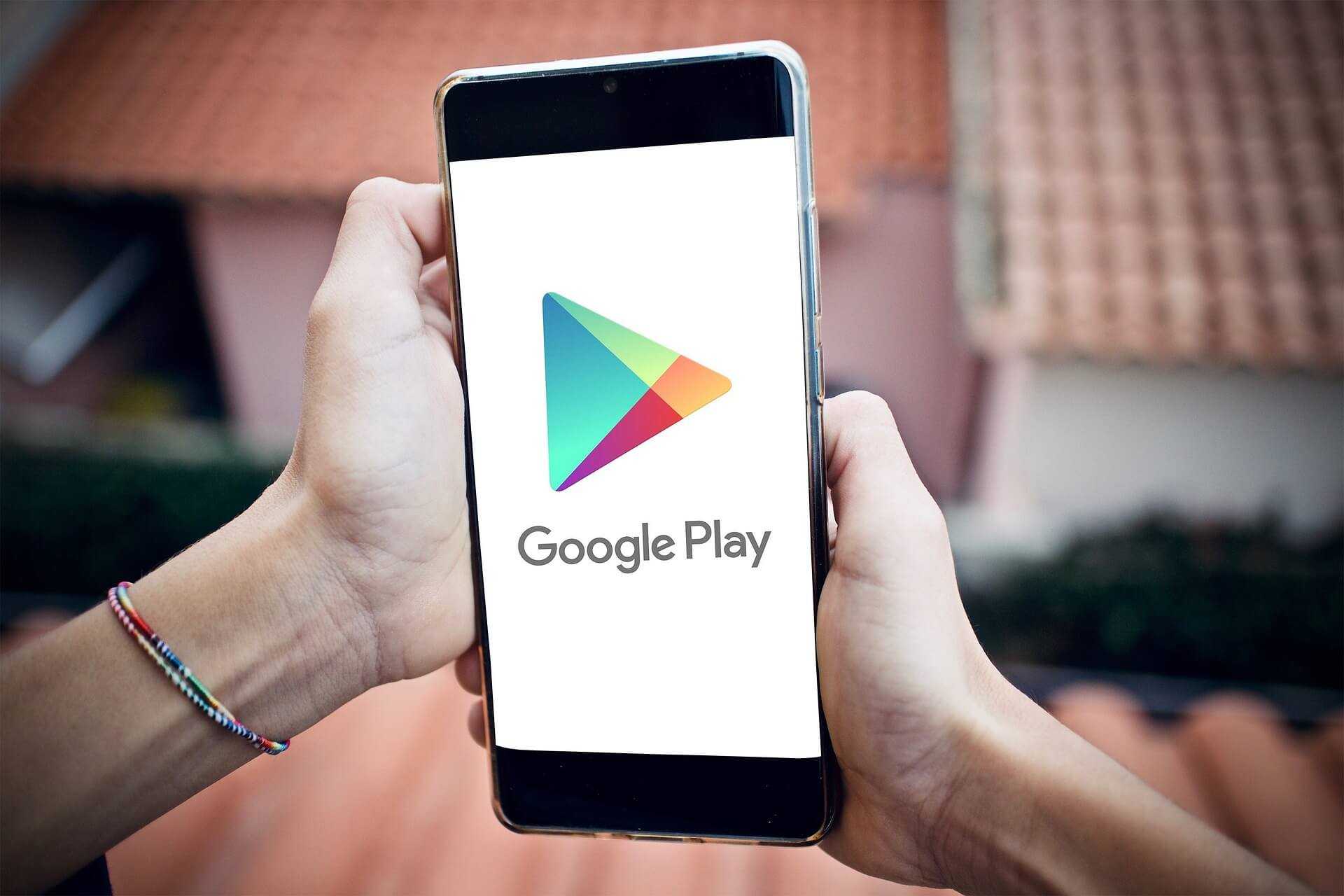
Publishing on a single platform like Amazon KDP limits your reach. You’re essentially putting all your eggs in one basket and hoping that one ecosystem will carry your entire author career.
Meanwhile, there’s a massive opportunity that many self-published authors continue to overlook: Google Play Books. This platform taps directly into the Android universe, where billions of users around the world are already reading and buying ebooks.
Most authors I’ve spoken to either didn’t know they could sell on Google Play Books or assumed it wasn’t worth the effort. That assumption costs them thousands of potential readers and a global presence they didn’t realize was missing.
Google Books, which powers search visibility and previews for titles listed through Google Play, quietly boosts discoverability in ways Amazon doesn’t. That means your ebook can appear in Google Search results, university library catalogs, and even Google Assistant recommendations.
-
Google Play Books gives you access to billions of Android users in over 75 countries without requiring exclusivity.
-
You can set custom pricing by region, offer free ebooks, and reach mobile-first readers in markets where Kindle struggles.
-
Publishing through the Google Play Books Partner Center is free, fast, and gives you full control over your metadata, pricing, and updates.
-
Authors who localize their descriptions and run targeted Google Ads often see higher visibility and more global downloads.
-
Automatic discounting can affect your Amazon pricing, so it’s smart to build in a buffer and monitor your listings regularly.
This blog post is your straightforward guide to getting started. You’ll learn how Google Play Books works, what you need to publish your book, the requirements to meet, and how it performs against heavyweights like Amazon KDP, Apple Books, and Draft2Digital.
Whether you’re aiming to earn more, expand internationally, or simply take control of your publishing reach, this could open up the path you’ve been looking for. I’ve used it myself, and I’ll show you why you should consider it too.
What Is Google Play Books?
Google Play Books is Google’s official platform for selling and reading ebooks and audiobooks. It’s built into the Google Play Store, the same place people download their favorite apps, movies, and games.
Millions of readers use it every day on their Android phones, tablets, Chromebooks, and browsers. Whether they’re looking for a bestselling thriller or a niche self-help guide, users can find, purchase, and download titles in seconds.
Thanks to the platform’s tight integration with Google Books, your work becomes part of something bigger than just an online store.
Your ebook can appear in Google Search results, be previewed in educational databases, and even show up on smart devices powered by Google Assistant. This extra visibility happens automatically once your book is published and properly indexed.
Google Play Books is accessible in more than 75 countries and pre-installed on billions of Android devices worldwide. That’s a massive potential audience baked right into the hardware.
It’s not limited to English-speaking readers either. Readers from places like India, Brazil, the Philippines, and Eastern Europe are actively downloading and consuming content in multiple languages.
When I uploaded my first book, I didn’t expect someone in Poland or Indonesia to find it, but they did. And those downloads came without any paid advertising. That’s when I realized how powerful the Google content ecosystem can be.
You’re not uploading to a shelf. You’re plugging into a network that’s wired into everything, from smartphones and smart homes to classrooms and search engines.
How Google Play Books Works for Authors
Publishing on Google Play Books starts with the Google Play Books Partner Center, a free portal where you can manage your books, royalties, and metadata. Signing up takes just a few minutes. Once your account is approved, you’re in full control of your publishing dashboard.
You can upload your manuscript as either an EPUB or PDF file, depending on your formatting style. I’ve used both. EPUB works better for reflowable text like fiction, while PDF is ideal for fixed layouts like workbooks or heavily formatted nonfiction.
You’ll also need to add your cover image and basic metadata like your book description, author name, categories, and keywords. Google uses that metadata to help index your book across its search engines and partner platforms.
The dashboard gives you solid flexibility. You can:
- Set different prices per country and currency
- Offer books for free in specific regions or globally
- Enable or disable DRM (Digital Rights Management) to reduce piracy risk
- Control which territories your book is available in
Unlike Amazon KDP, Google gives you granular control over your pricing without requiring enrollment in any exclusivity program. You can sell your ebook for $0.99 in the U.S., €2.99 in Germany, and ₹149 in India, all in one dashboard.
However, pricing on Google Play Books comes with a twist. Google sometimes applies an automatic discount to the list price you enter. For example, a book listed at $4.99 might appear as $4.49 in the Play Store.
They don’t always tell you when or how much it will be discounted. This is based on algorithmic pricing strategies tied to market demand and user behavior.

That discount can cause problems on Amazon, which aggressively price-matches competitors. I’ve had moments where I listed a book on Google at $3.99, saw it discounted to $3.59, and then noticed Amazon quietly slashed my price to match it, cutting into my 70% royalty margin.
So now, I always factor in a buffer when setting my price on Google. It’s one of those small details that can affect your bottom line fast if you’re not paying attention.
Publishing through Google Play Books Partner Center gives you a direct channel to a global marketplace, with real-time updates and no gatekeepers. The tools aren’t flashy, but they get the job done. And once you’re familiar with the quirks, you can use them to your advantage.
Requirements to Publish on Google Play Books
Getting your book live on Google Play Books doesn’t take much. The process is straightforward, and you don’t need a special invite or publishing contract to begin. All you need is a few basics in place:
- A Google account (the same kind you use for Gmail or YouTube)
- A valid bank account and tax information so you can get paid
- A properly formatted manuscript, either EPUB or PDF
- Complete and clear metadata, including your book title, author name, book description, categories, language, and tags
While ISBNs aren’t mandatory, using one makes your book look more polished and trackable in global databases.
I used to skip ISBNs when I was just getting started, but after one of my books got picked up by a blogger who linked to the ISBN in their review, I realized the value. It also helps libraries and bookstores recognize your title.
Google will assign an internal identifier if you don’t have an ISBN, but I recommend getting your own, either through Bowker (for U.S. authors) or a free ISBN source, depending on your country. It’s one of those small touches that adds credibility, especially when you’re distributing globally.
Once your account is verified, you won’t need to wait for a manual review before hitting publish. That’s a big win compared to platforms like Apple Books, where the upload process often depends on using a Mac or going through a third-party distributor like PublishDrive or Draft2Digital.
With Google Play Books, you have full DIY control from day one. You can upload, publish, update pricing, and make edits without dealing with any middlemen or delays.
This level of autonomy gives you room to test things quickly, like running a price promo, tweaking your book description, or re-uploading a new version of your manuscript.
It’s direct, fast, and flexible, exactly what you want when you’re trying to get your book out to the world without unnecessary friction.
How Google Play Books Differs from Other Platforms
Publishing through Google Play Books gives you something a lot of self-publishing platforms don’t: full freedom.
There are no exclusivity clauses, no restrictions that keep you from distributing your book elsewhere, and no hoops to jump through before hitting “publish.” You decide where your book goes, how much it costs, and who sees it.
Compared to Amazon KDP
Amazon KDP might be the most well-known self-publishing platform, but its reach is heavily skewed toward the U.S., Canada, and the U.K. Google Play Books, on the other hand, thrives in places where Kindle doesn’t.
Countries across Asia, South America, Eastern Europe, and Africa see millions of downloads each year through Android devices, and Google Play is their default marketplace.
KDP Select, Amazon’s exclusivity program, offers perks like Kindle Unlimited access and promotional pricing tools, but it comes at the cost of being locked into Amazon for 90 days at a time. That can really limit your growth if you’re trying to expand globally. Google Play Books doesn’t box you in.
Another big win? Google Search visibility. On Google Play, your ebook can be indexed in Google Search results, which can drive organic discovery from people actively searching for topics or titles like yours.
You get visibility beyond the store itself, something Amazon doesn’t offer natively unless you’re running external traffic.
Compared to Apple Books
Publishing directly to Apple Books requires a Mac and iTunes Producer software. I remember borrowing a friend’s MacBook just to upload a file—clunky, time-consuming, and totally avoidable.
Google Play Books works on any desktop browser, making it easier and more accessible for authors using Windows or ChromeOS.
Android also dominates the mobile market globally. According to Statista, Android held nearly 71% of the global market share in 2024, which means more readers are using Android devices than iOS.

Apple Books may have a strong foothold in the U.S., but Google Play Books wins in terms of scale and worldwide access.
And when it comes to file formats, Apple Books can be picky. They prefer clean EPUBs that pass through their tight formatting checks. Google, meanwhile, accepts both EPUB and PDF, giving you more flexibility depending on the type of content you’re publishing.
Compared to Draft2Digital
Draft2Digital is a reliable aggregator for distributing to stores like Barnes & Noble, Apple Books, and Kobo. But here’s the catch: they don’t deliver to Google Play Books. That means your book won’t appear in one of the largest Android-based marketplaces unless you handle it yourself.
I’ve used Draft2Digital for broad distribution before, and it’s great for simplicity, but skipping Google means missing out on an entire reader segment.
Uploading directly to Google Play Books takes a little setup at first, but once you’re in, you get access to custom pricing, regional control, and real-time updates, all without waiting for an aggregator to sync your content or fix errors on your behalf.
Each of these platforms has its strengths, but when you want global reach, direct pricing control, and independence, Google Play Books gives you the kind of flexibility that makes a difference over time.
Pros and Cons of Publishing on Google Play Books
Publishing on Google Play Books has some strong advantages, especially for indie authors looking to expand beyond traditional U.S.-centric platforms.
You’re not locked into any ecosystem, and the reach alone makes it worth serious consideration. That said, it has a few quirks that can trip you up if you’re not paying attention.
Pros:
Access to billions of Android users
The size of the audience is hard to overstate. With Android dominating over 70% of the global smartphone market, you’re plugging your book into the hands of readers from Indonesia to Brazil, from South Africa to the Philippines. That’s reach you won’t get from Amazon KDP or Apple Books alone.
Full pricing and territory control
You can set different price points for different countries, and that opens up smart regional pricing strategies. I usually price books lower in countries with strong mobile readership but lower purchasing power. It’s helped me sell more units and increase visibility in markets that most authors ignore.
Free ebook options for lead magnets
You’re allowed to offer books for free. No time limits, no gimmicks. That’s incredibly useful for series starters, sample chapters, or nonfiction lead magnets. I’ve used this feature to drive newsletter sign-ups, and the downloads came in fast without spending anything on ads.
Wide international distribution
Your book doesn’t just sit in one store. It becomes visible across multiple Google surfaces—Google Play, Google Books previews, Google Search snippets, and even on smart devices. This creates small but steady ripple effects in your discoverability over time.
No exclusivity restrictions
You’re free to sell the same book on other platforms like Amazon, Apple Books, Kobo, and your own website. This flexibility lets you build a wide distribution network without worrying about contract terms or blackout periods.
Cons:
Automatic price discounting can affect revenue
This one takes some getting used to. Google sometimes slashes your listed price based on its internal pricing algorithm. I once listed a book at $4.99, only to find it on sale at $4.25 without warning.
That triggered Amazon’s price-match bot, which then dropped my price there too, cutting into my KDP royalties without any input from me. You need to plan for this or leave a buffer in your pricing.

Interface can feel clunky compared to Amazon’s KDP dashboard
KDP’s dashboard is more intuitive and polished. Google Play Books’ interface gets the job done, but it feels outdated in spots. Finding certain controls or bulk-editing your catalog can be time-consuming until you get used to the layout.
Fewer internal promotional tools
There are no built-in promo campaigns, countdown deals, or paid visibility features like Amazon’s Kindle Deals or Featured Deals.
You’ll need to drive your own traffic using Google Ads or organic marketing efforts. That said, you can still succeed with smart pricing, strategic freebies, and targeted outreach.
Weighing these pros and cons helped me understand how to use Google Play Books as a supplement to my wider publishing strategy, not a replacement, but a strong pillar that opens up new doors.
Market Size and Reader Demographics
Android holds over 70% of the global mobile OS market share, according to the latest data from StatCounter. That’s a massive lead over iOS, and it tells you one important thing: most people in the world are reading on Android devices.
Since Google Play Books is the default ebook platform for Android users, your book gets direct access to this huge user base the moment it goes live.
This isn’t limited to casual readers in the U.S. In countries like India, Brazil, Indonesia, and the Philippines, mobile-first reading isn’t a trend. It’s the norm.
Physical bookstores are either limited or expensive, and people rely heavily on their phones to access digital content, including books. In these markets, Google Play Books has a strong foothold because it’s already built into the devices people are using every day.
When I published my first nonfiction guide, I was surprised to find downloads coming from places I hadn’t even thought to target Lagos, Jakarta, and even a city in rural India I had to look up on the map. All of that came from organic traffic through Google Play Books, without any ad spend.
Another advantage here is language diversity. Readers in these regions are comfortable reading in both English and their native languages. That opens up huge opportunities for you to offer translated versions of your books or create bilingual editions.
Even a basic English-language book with a culturally relevant topic can perform well, simply because competition is thinner and demand is rising.
Reaching these international markets through Amazon alone is tough. Kindle isn’t dominant in these regions, and the Kindle app often requires users to sideload or jump through hoops.
With Google Play Books, the app is already there, already integrated, and ready to recommend your book based on the reader’s browsing behavior.
Tapping into this kind of global market doesn’t require a marketing degree or a team. You just need to show up in the right place, and Google Play Books puts you there by default.
Earning Potential on Google Play Books
Google Play Books typically offers authors a royalty rate of 52% for ebooks, regardless of price. That rate might sound modest compared to Amazon’s 70% tier, but there’s less fine print involved.
On Amazon KDP, you only get 70% royalties if your book is priced between $2.99 and $9.99. Anything outside that range? You drop to 35%. Google keeps it simple. No price range restrictions, and no exclusivity contracts.
The earning potential on Google Play Books really starts to show once you tap into countries where Amazon’s presence is weaker. Readers in places like India, Indonesia, the Philippines, and parts of Latin America are hungry for affordable ebooks in English and local languages.
I’ve had books priced at the equivalent of $1.50 in some of these markets, and they outsold my U.S. sales during entire weeks. That’s the kind of return that gets overlooked when you focus only on Western platforms.
Another edge? No delivery fees. Amazon takes a bite out of your royalties by charging delivery fees for larger files in the 70% tier. That can add up fast if you publish image-heavy content. On Google Play Books, there are no delivery charges, so your royalty stays predictable.
In my own experience, what really moved the needle was offering the first book in a series for free. Google allows permanent free pricing, so I used that as a lead magnet.
The downloads spiked in multiple countries, many of which I had never sold to before, and readers who enjoyed Book One moved on to buy the next two or three. It worked even better when I localized the pricing and rewrote the blurbs to include regional references and keywords.
There’s money to be made here, especially when you approach Google Play Books as part of a long-term series or catalog strategy. One book might not bring in hundreds right away, but five titles working together can generate consistent, global income on autopilot.
Real-Life Success Stories
Some authors have found success on Google Play Books in places they didn’t plan for at all. That’s one of the most surprising perks of publishing on this platform. Your book can take off in a country you’ve never marketed to, simply because it’s visible, mobile-friendly, and easy to download.
I worked with a self-help author who initially focused all his efforts on the U.S. market through Amazon. Sales were slow. He gave Google Play Books a try without much expectation.

Within weeks, over 60% of his downloads were coming from India and Malaysia, regions where he had never sold a single copy before. Those readers were finding his book through Google Search, reading it on their Android phones, and leaving solid reviews that boosted his visibility even more.
Romance authors seem to thrive on this platform, especially those offering box sets or long-running serials. The reason is simple: Google Play Books is built for mobile use. Readers on their phones are more likely to consume content in bursts, especially when the entire series is available at once.
Authors who package three or four books together at a discounted price often see a sharp spike in sales, especially in regions where binge-reading is popular.
One indie romance writer I follow ran a promo where the first book was free and the full box set was under $5. Within two months, her audience had expanded into countries like the Philippines, Nigeria, and South Africa.
Her Amazon sales barely moved during that time, but her Google Play Books dashboard told a different story: hundreds of downloads, new reviews, and a mailing list that started picking up speed.
Unexpected success happens here because Google Play Books reaches people who aren’t being served by other platforms. You might think your genre won’t sell outside the U.S., but the data says otherwise.
Readers in emerging markets are just as eager for good stories. They’re simply looking on different shelves. This platform puts your book on those shelves by default.
Common Mistakes Authors Make on Google Play Books
Publishing on Google Play Books gives you global access and full control, but it also demands a slightly different approach than platforms like Amazon KDP. Many authors dive in using the same playbook they use for other platforms, and that’s where things start to fall apart.
Setting the same price as Amazon and getting undercut by auto-discounting
This is probably the most common misstep. Authors copy-paste their Amazon prices into Google Play Books without realizing that Google applies automatic discounts based on market trends and pricing algorithms.
Your $3.99 ebook might quietly get reduced to $3.59, which can trigger Amazon’s price-match system. Suddenly, your royalties take a hit on both platforms, without warning. I learned this the hard way and now always factor in a small buffer when setting prices on Google to avoid this domino effect.
Ignoring metadata optimization, which limits visibility in Google Search
Metadata might sound like a backend chore, but on Google Play Books, it has front-end consequences. Google relies heavily on titles, subtitles, categories, keywords, and descriptions to understand what your book is about and where to place it in search results.
Skipping proper keyword research or writing vague blurbs means your book gets buried. I once forgot to add alternative spelling variations and genre tags, and my book vanished in a sea of irrelevant listings. After updating the metadata, downloads picked up within days.
Skipping localization by not translating blurbs or selecting proper regions
Google gives you the option to set different descriptions, languages, and availability by region. Many authors skip this part, leaving their book in English-only with global pricing that doesn’t match local expectations.
Readers in Brazil or Thailand might be interested in your content, but they’ll scroll right past it if the description isn’t in their language or the price seems high in their currency. Even adding short localized blurbs in popular languages can make a real difference in visibility and trust.
Not linking book pages to Google Ads for discoverability
Some authors expect sales to come in just because the book is live. That rarely works unless you already have a strong audience. Google Play Books doesn’t have built-in ad tools like Amazon, but it plays extremely well with Google Ads.
You can run search ads, display ads, or even YouTube promos that drive traffic directly to your book’s Play Store link. I’ve seen authors spend as little as $5 a day on targeted Google Ads and earn it back multiple times over from new readers. But that only happens when your book page is actually connected to the ad strategy.
These are all avoidable mistakes, and once you know how to navigate around them, Google Play Books becomes much easier to handle, and far more rewarding.
Are There Advertising or Promotion Options?
Google Play Books doesn’t come with a built-in advertising system like Amazon Ads, so you won’t find any “sponsored” slots inside the Play Books store. But that doesn’t mean you’re out of options.
You’re actually sitting on one of the most powerful advertising platforms in the world—Google Ads—and when used correctly, it can drive steady traffic straight to your book page.
Running Google Ads gives you access to placements across YouTube, Gmail, Google Search, mobile apps, and third-party websites in the Display Network. This means you can catch readers where they’re already spending time: watching videos, checking emails, or browsing blogs.

I’ve seen authors run a $20 ad campaign and end up on the radar of readers from five different countries by the end of the week.
Here’s what’s possible:
- Display ads on YouTube and Gmail let you put your book cover in front of readers who are already consuming content in your genre. A well-designed visual can grab their attention in seconds.
- Search ads allow you to target book-related keywords like “best sci-fi books,” “romance novels under $5,” or “productivity ebooks,” placing your title at the top of the search results page.
- Retargeting works like magic—you can show ads to people who already visited your book’s Play Store page but didn’t hit “Buy.” These are warm leads who just need a nudge.
The trick is using your book’s Google Play Books URL as your ad destination. This keeps everything seamless and trackable. You can monitor your traffic and conversions using Google Analytics and your Play Console dashboard. Over time, you’ll see which keywords or ad placements lead to clicks and actual purchases.
When I first experimented with this, I focused on readers searching for time management ebooks in Southeast Asia. The cost-per-click was low, and my daily budget stretched surprisingly far. Within a few days, I saw a spike in downloads, mostly from mobile devices, and many of them turned into repeat buyers for my other books.
Promoting on Google Play Books isn’t about blasting ads everywhere. It’s about creating focused, measurable campaigns that guide interested readers straight to your page, and making sure that once they land, the book does the convincing.
Tips to Maximize Your Results on Google Play Books
Getting your book listed on Google Play Books is only half the battle. What really moves the needle is knowing how to fine-tune your strategy so your listing stands out, and keeps working in your favor long after launch.
Target international markets where Kindle is weaker
Regions like India, Indonesia, Nigeria, and the Philippines are packed with mobile-first readers who rely on Android devices and shop directly through the Play Store.
Amazon’s Kindle store doesn’t dominate in these areas the way it does in the U.S. or U.K. Pricing your book competitively in local currencies or running short regional promotions can help you tap into a hungry, underserved audience.
I’ve priced one of my ebooks lower in Southeast Asia and saw consistent sales every month, more than I got from the U.S. during the same period.
Offer the first book in a series for free to drive traffic
Google Play Books allows permanent free listings, which is incredibly useful when you have a multi-book series. Giving away the first book acts like a magnet. Readers get a taste of your writing style, and those who enjoy it are far more likely to buy the next installment.
When I released my second nonfiction title, I kept the first one free and added a direct link to Book Two at the end. Downloads of the free book created a steady stream of buyers for the sequel, without spending a single dollar on ads.
Localize your descriptions and metadata for global audiences
It’s easy to assume English will carry your book everywhere, but many readers are more likely to click “Buy” when they see a description in their native language. Translating your blurb into Spanish, Portuguese, Tagalog, or Hindi, even using simple, clear language, can boost both visibility and trust.
Google Play Books gives you space to customize this per region. I’ve personally seen books get picked up faster after tweaking the language and categories for specific countries.
Monitor price adjustments and adjust your Amazon listings accordingly
Google sometimes discounts your listed price automatically. If you’re also selling on Amazon, this can lead to unwanted price-matching, which cuts into your KDP royalties. To avoid this, keep an eye on your live pricing inside the Play Books Partner Center.
I usually build in a small buffer when I set my prices on Google, just enough to protect my margins across both platforms. A quick weekly check-in can help you catch changes before they eat into your income.
Getting results on Google Play Books doesn’t mean overhauling your entire publishing strategy. A few smart moves, made with intention and a bit of global perspective, can give your book more reach and more staying power in a market that’s still wide open for indie authors.

Is Google Play Books Worth It?
Absolutely. Skipping Google Play Books means passing up the chance to get your work in front of readers who aren’t hanging out on Amazon, or who can’t even access Kindle in their country.
The potential here is massive, and while the dashboard may not be as sleek as Amazon’s and the automatic discounting requires some adjusting, the trade-off is reach. Real reach.
You get direct access to billions of Android-first readers across more than 75 countries. These are mobile users who already have the Google Play Books app on their phone and are used to buying content through it.
You don’t need to convince them to install another app or sign up for a new platform. Your book is already a few taps away from being in their hands.
Publishing here gives you a level of freedom that’s hard to find elsewhere. You can control pricing, reach new regions, and build your global author brand without being locked into exclusivity deals or jumping through technical hoops.
Every time I’ve released a new title on Google Play, I’ve reached readers in places I never thought possible, and that’s without spending hundreds on ads.
Amazon may dominate in the U.S., but Google owns the rest of the jungle, from Southeast Asia to Eastern Europe to parts of Latin America where Kindle’s presence barely exists.
As a self-published author, you’re already doing the hard part: writing, editing, packaging, and putting your book into the world. Claiming your spot on Google Play Books takes just a little more effort and opens the door to readers you would never have reached otherwise.
You’ve already built something worth sharing. Now, make sure it shows up in the hands of people all over the world who are ready to read it.





Keep working ,great job!
Greetings! Very helpful advice on this article! It is the little changes that make the biggest changes. Thanks a lot for sharing!
This web site is really a walk-through for all of the info you wanted about this and didn’t know who to ask. Glimpse here, and you’ll definitely discover it.
I too think thence, perfectly indited post! .
Hiya very cool web site!! Guy .. Beautiful .. Superb .. I will bookmark your website and take the feeds also…I’m satisfied to search out so many helpful information here in the put up, we need develop extra strategies on this regard, thank you for sharing.
I likewise think hence, perfectly pent post! .
Very interesting info !Perfect just what I was looking for!
Have you ever thought about adding a little bit more than just your articles? I mean, what you say is valuable and everything. But think about if you added some great graphics or videos to give your posts more, “pop”! Your content is excellent but with images and clips, this website could undeniably be one of the greatest in its field. Superb blog!
Nice read, I just passed this onto a colleague who was doing some research on that. And he just bought me lunch because I found it for him smile Therefore let me rephrase that: Thanks for lunch!
I was recommended this web site by my cousin. I’m not sure whether this post is written by him as no one else know such detailed about my trouble. You’re amazing! Thanks!
of course like your web site however you need to take a look at the spelling on quite a few of your posts. Many of them are rife with spelling issues and I in finding it very bothersome to tell the reality then again I’ll certainly come again again.
You have brought up a very great details, regards for the post.
Hi! This is my first comment here so I just wanted to give a quick shout out and say I truly enjoy reading through your posts. Can you suggest any other blogs/websites/forums that cover the same subjects? Thanks a ton!
I dugg some of you post as I thought they were very helpful handy